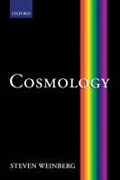
This book is unique in the detailed, self-contained, and comprehensive treatment that it gives to the ideas and formulas that are used and tested in moderncosmological research. It divides into two parts, each of which provides enough material for a one-semester graduate course. The first part deals chiefly with the isotropic and homogeneous average universe; the second part concentrates on the departures from the average universe. Throughout the book the authorpresents detailed analytic calculations of cosmological phenomena, rather than just report results obtained elsewhere by numerical computation. The book isup to date, and gives detailed accounts of topics such as recombination, microwave background polarization, leptogenesis, gravitational lensing, structure formation, and multifield inflation, that are usually treated superficially ifat all in treatises on cosmology. Copious references to current research literature are supplied. Appendices include a brief introduction to general relativity, and a detailed derivation of the Boltzmann equation for photons and neutrinos used in calculations of cosmological evolution. Also provided is an assortment of problems. INDICE: 1. The Expansion of the Universe; 2. The Cosmic Microwave Radiation Background; 3. The Early Universe; 4. Inflation; 5. General Theory of Cosmological Fluctuations; 6. Evolution of Cosmological Fluctuations; 7. Anisotropies in the Microwave Sky; 8. The Growth of Structure; 9. Gravitational Lensing; 10. Fluctuations from Inflation; Appendices; A. Some Useful Numbers; B. Reviewof General Relativity; C. Energy Transfer Between Radiation and Electrons; D.The Ergodic Theorem; E. Gaussian Distributions; F. Newtonian Cosmology; G. Photon Polarization; H. The Relativistic Boltzmann Equation; Notation; Glossary of Symbols; Assorted Problems .
- ISBN: 978-0-19-852682-7
- Editorial: Oxford University Press
- Encuadernacion: Cartoné
- Páginas: 593
- Fecha Publicación: 01/02/2008
- Nº Volúmenes: 1
- Idioma: Inglés
